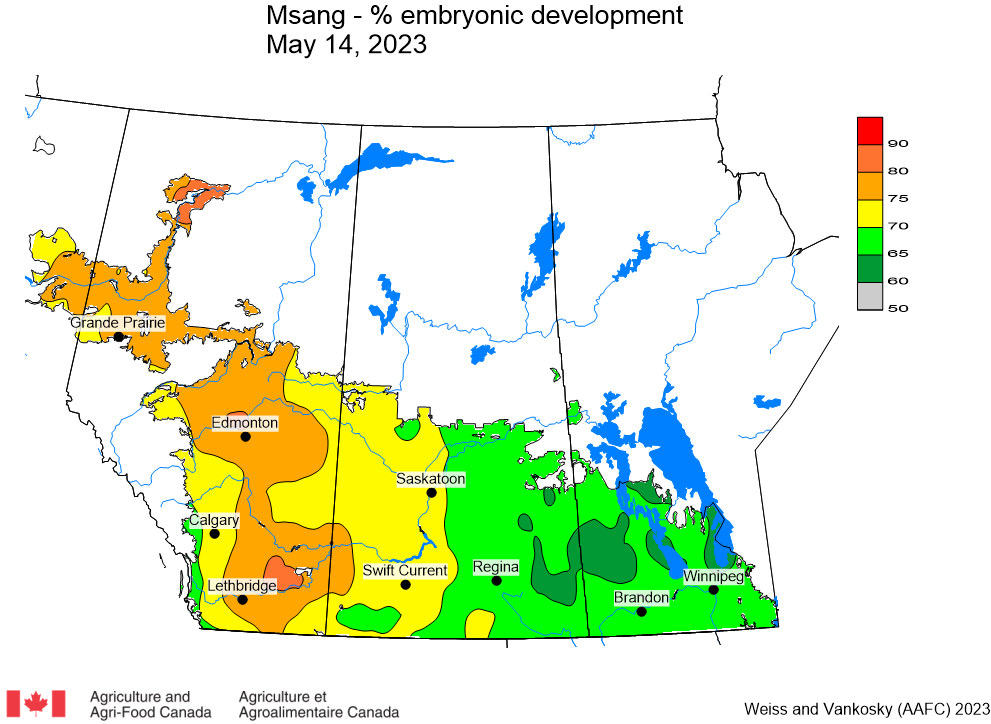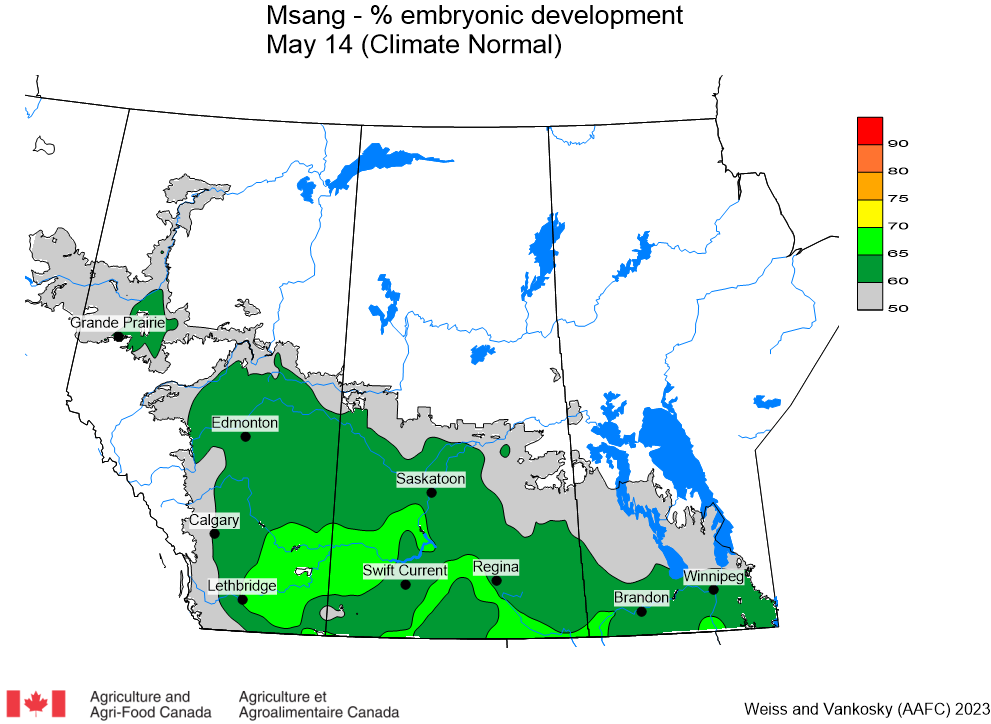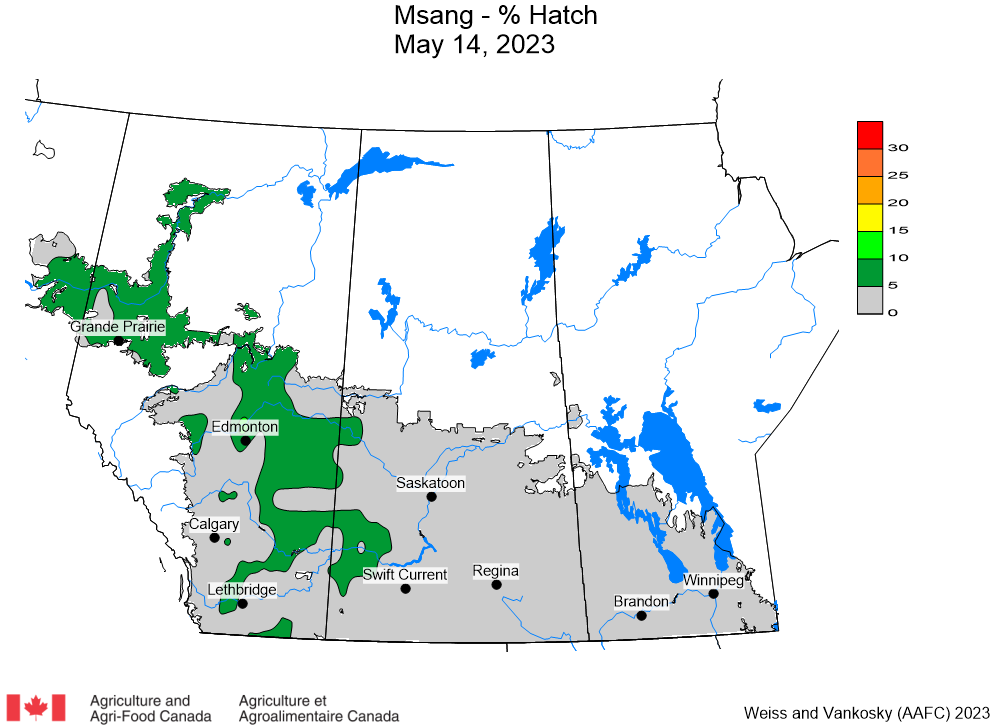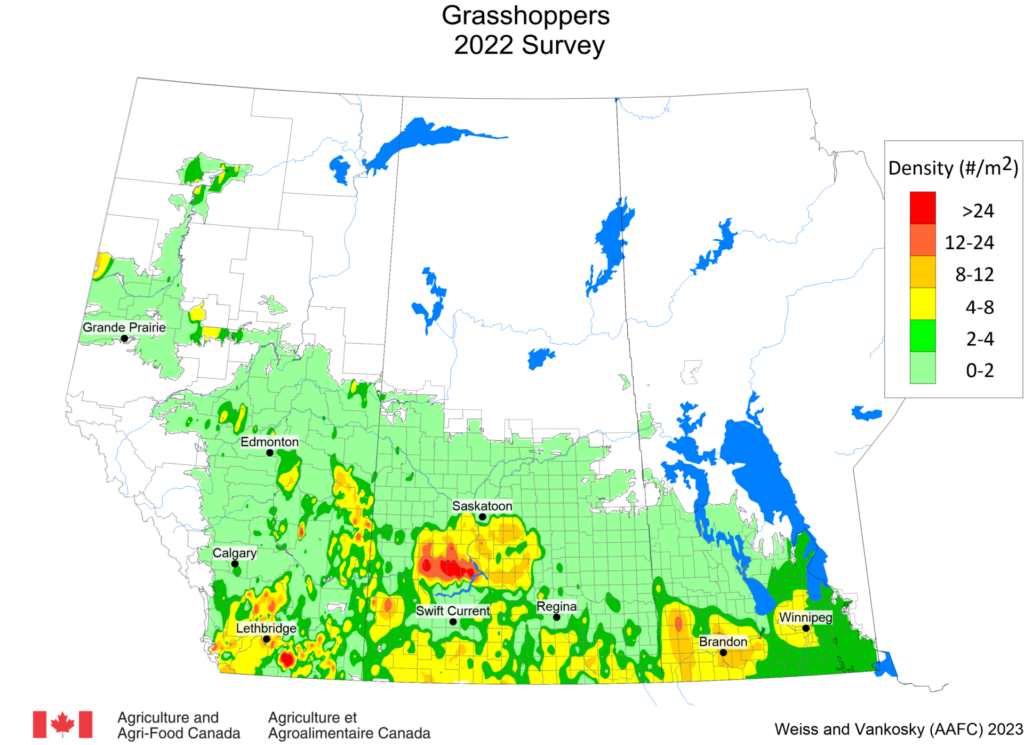Model simulations were used to estimate development of grasshopper eggs as of May 14, 2023. Compared with average spring temperatures, temperatures in Alberta and western Saskatchewan have been well above average so far in 2023. Unseasonably warm temperatures continue to contribute to rapid grasshopper egg development (Fig. 1). Compared to egg development expected if temperatures were like long-term to climate normals (Fig. 2), egg development in 2023 is well ahead of average (Fig. 1). Cool conditions in Manitoba have resulted in slower development rates that are similar to long-term average development rates.


As a result of above normal temperatures, model outputs predict that grasshopper eggs have already started to hatch across Alberta and western Saskatchewan (Fig. 3). We have received reports of grasshopper nymphs from both provinces. This spring, grasshopper eggs are hatching approximately 10 days earlier than normal. Areas with highest densities of adult grasshoppers in summer of 2022 overlap with regions with greatest predicted egg development so far in spring of 2023 (Fig. 4), including a large region extending from south of the Yellowhead Highway corridor to the Canada-USA border. Prairie farmers should be scouting for grasshoppers early this spring and summer, especially if conditions remain warmer and drier than normal over the next few weeks.


Test your grasshopper knowledge by taking the Canola Watch quiz!
